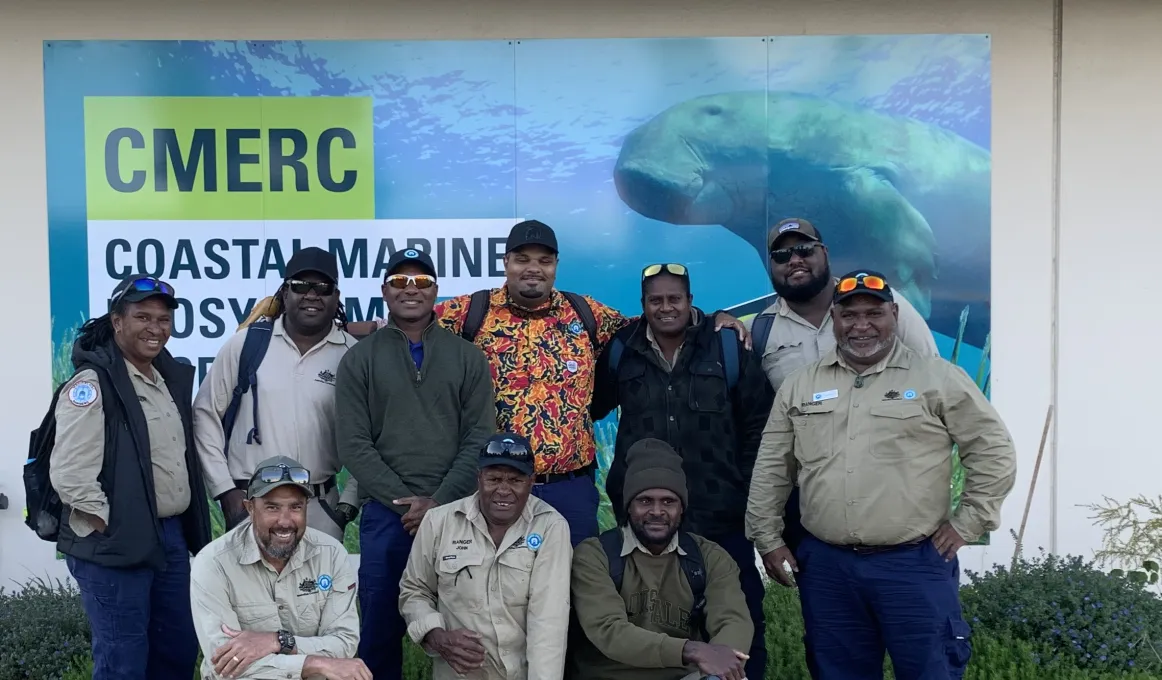Torres Strait rangers ready to protect natural wonders and wildlife when disaster strikes

As parts of the nation brace for extreme weather, Far North Queensland rangers are ready to protect some of the world’s most diverse wildlife in times of disaster such as cyclones, fires and floods.
Torres Strait Regional Authority (TSRA) Acting Chairperson Horace Baira said 10 rangers from remote island communities – including Kubin, Masig, Poruma, St Pauls, Ugar and Warraber – are now nationally certified in wildlife disaster response.
“Fires and floods have had devastating impacts on native animal populations across Australia, this training helps fill a gap so that rangers on-the-ground in our communities can respond quickly to help wildlife in a disaster situation,” Mr Baira said.
“Rangers are on the frontline when it comes to safeguarding the Torres Strait’s diverse land and sea ecosystems, including the northernmost part of the Great Barrier Reef, for future generations.
“We are now better placed to respond to risks and disasters to protect our region’s diverse environment and wildlife, including turtle, dugong and native birds such as the Torres Strait Pidgeon, Eastern Reef Egret, Eastern Curlew, pelican and whimbrel.”
Rangers travelled from the Torres Strait to complete the nationally accredited ‘Respond to Wildlife Emergencies’ (Oiled Wildlife Response Training) delivered by the Queensland Department of Environment and Science in Gladstone.
Senior Project Officer (Compliance) from TSRA’s Land and Sea Management Unit, Ronald Fujii, said the training also recognised the importance of traditional knowledge in disaster management.
“Our rangers will combine traditional knowledge and modern disaster management practices as part of disaster management in the Torres Strait and may even be deployed to assist in times of need around Australia,” Mr Fujii said.
“TSRA Rangers are trained and ready to work with lead agencies to manage disasters and threats to wildlife.”
TSRA Senior Ranger Supervisor Aaron Bon said thanks to the training, rangers can now also identify, rescue and help treat wildlife at risk or impacted by disasters such as oil spills and bush fires.
“Caring for land and sea also means looking after the animals who call our islands home, when disaster strikes,” Mr Bon said.
“Wildlife in the Torres Strait plays a big part of life for our people and birds are commonly used as indicators for changes in weather, location of food supply around the region and can even detect disasters.
“The environment is connected to our identity as Torres Strait Islanders – it is part of who we are.”
The Torres Strait Region is rich in wildlife resources, flora and fauna, which spreads across 48,000km2 including valuable ecosystems, reefs and 14 inhabited communities between the tip of Cape York and Papua New Guinea (PNG).
Learn more about the TSRA at www.tsra.gov.au
31 July 2022 is World Ranger Day – an opportunity to acknowledge the work rangers do to protect our planet’s natural treasures and cultural heritage.